The DNA methylation landscape of the root-knot nematode-induced pseudo-organ, the gall, in Arabidopsis, is dynamic, contrasting over time, and critically important for successful parasitism
- PMID: 35872574
- PMCID: PMC9825882
- DOI: 10.1111/nph.18395
The DNA methylation landscape of the root-knot nematode-induced pseudo-organ, the gall, in Arabidopsis, is dynamic, contrasting over time, and critically important for successful parasitism
Abstract
Root-knot nematodes (RKNs) induce giant cells (GCs) within galls which are characterized by large-scale gene repression at early stages. However, the epigenetic mechanism(s) underlying gene silencing is (are) still poorly characterized. DNA methylation in Arabidopsis galls induced by Meloidogyne javanica was studied at crucial infection stages (3 d post-infection (dpi) and 14 dpi) using enzymatic, cytological, and sequencing approaches. DNA methyltransferase mutants (met1, cmt2, cmt3, cmt2/3, drm1/2, ddc) and a DNA demethylase mutant (ros1), were analyzed for RKN resistance/tolerance, and galls were characterized by confocal microscopy and RNA-seq. Early galls were hypermethylated, and the GCs were found to be the major contributors to this hypermethylation, consistent with the very high degree of gene repression they exhibit. By contrast, medium/late galls showed no global increase in DNA methylation compared to uninfected roots, but exhibited large-scale redistribution of differentially methylated regions (DMRs). In line with these findings, it was also shown that DNA methylation and demethylation mutants showed impaired nematode reproduction and gall/GC-development. Moreover, siRNAs that were exclusively present in early galls accumulated at hypermethylated DMRs, overlapping mostly with retrotransposons in the CHG/CG contexts that might be involved in their repression, contributing to their stability/genome integrity. Promoter/gene methylation correlated with differentially expressed genes encoding proteins with basic cell functions. Both mechanisms are consistent with reprogramming host tissues for gall/GC formation. In conclusion, RNA-directed DNA methylation (RdDM; DRM2/1) pathways, maintenance methyltransferases (MET1/CMT3) and demethylation (ROS1) appear to be prominent mechanisms driving a dynamic regulation of the epigenetic landscape during RKN infection.
Keywords: Meloidogyne javanica; Arabidopsis; DNA methylation/epigenetics signatures; galls; giant cells; siRNAs; tomato; transposons.
© 2022 The Authors. New Phytologist © 2022 New Phytologist Foundation.
Figures

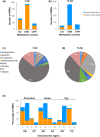
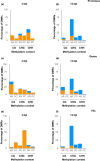


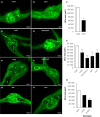
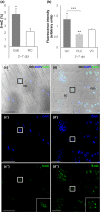
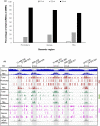
Similar articles
-
Silenced retrotransposons are major rasiRNAs targets in Arabidopsis galls induced by Meloidogyne javanica.Mol Plant Pathol. 2018 Nov;19(11):2431-2445. doi: 10.1111/mpp.12720. Mol Plant Pathol. 2018. PMID: 30011119 Free PMC article.
-
Characterization of microRNAs from Arabidopsis galls highlights a role for miR159 in the plant response to the root-knot nematode Meloidogyne incognita.New Phytol. 2017 Nov;216(3):882-896. doi: 10.1111/nph.14717. Epub 2017 Sep 14. New Phytol. 2017. PMID: 28906559
-
Characterization of siRNAs clusters in Arabidopsis thaliana galls induced by the root-knot nematode Meloidogyne incognita.BMC Genomics. 2018 Dec 18;19(1):943. doi: 10.1186/s12864-018-5296-3. BMC Genomics. 2018. PMID: 30563458 Free PMC article.
-
Specifications of Targeting Heterochromatin Modifications in Plants.Mol Plant. 2018 Mar 5;11(3):381-387. doi: 10.1016/j.molp.2017.10.002. Epub 2017 Oct 13. Mol Plant. 2018. PMID: 29032247 Review.
-
Active DNA demethylation in plants: 20 years of discovery and beyond.J Integr Plant Biol. 2022 Dec;64(12):2217-2239. doi: 10.1111/jipb.13423. J Integr Plant Biol. 2022. PMID: 36478523 Review.
Cited by
-
Establishment and maintenance of DNA methylation in nematode feeding sites.Front Plant Sci. 2023 Jan 10;13:1111623. doi: 10.3389/fpls.2022.1111623. eCollection 2022. Front Plant Sci. 2023. PMID: 36704169 Free PMC article.
-
Natural genetic variation and negative density effects in plant-nematode interactions.Plant Environ Interact. 2023 Dec 13;5(1):e10133. doi: 10.1002/pei3.10133. eCollection 2024 Feb. Plant Environ Interact. 2023. PMID: 38323129 Free PMC article.
-
Functional studies of plant transcription factors and their relevance in the plant root-knot nematode interaction.Front Plant Sci. 2024 May 8;15:1370532. doi: 10.3389/fpls.2024.1370532. eCollection 2024. Front Plant Sci. 2024. PMID: 38784063 Free PMC article. Review.
-
Conceptual Framework of Epigenetic Analyses of Plant Responses to Sedentary Endoparasitic Nematodes.Methods Mol Biol. 2024;2756:327-341. doi: 10.1007/978-1-0716-3638-1_12. Methods Mol Biol. 2024. PMID: 38427303
-
Analysis of DNA Methylation Differences during the JIII Formation of Bursaphelenchus xylophilus.Curr Issues Mol Biol. 2023 Nov 30;45(12):9656-9673. doi: 10.3390/cimb45120603. Curr Issues Mol Biol. 2023. PMID: 38132449 Free PMC article.
References
-
- de Almeida Engler EJ, Gheysen G. 2013. Nematode‐induced endoreduplication in plant host cells: why and how? Molecular Plant–Microbe Interactions 26: 17–24. - PubMed
-
- de Almeida Engler J, Vieira P, Rodiuc N, Grossi de Sa MF, Engler G. 2015. The plant cell cycle machinery: usurped and modulated by plant‐parasitic nematodes. Advances in Botanical Research 73: 91–118.
Publication types
MeSH terms
Substances
Associated data
- Actions
- Actions
- Actions
- Actions
Grants and funding
LinkOut - more resources
Full Text Sources
Molecular Biology Databases
Miscellaneous

